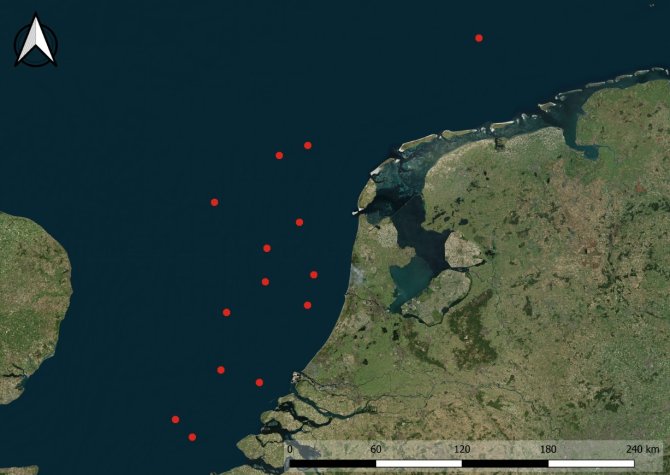
Project
Offshore bat detector research
Land-based research shows that wind turbines frequently cause fatalities amongst bats. Although most bat activity occurs on land, bats are regularly observed at sea. Because it is currently unclear what the consequences of offshore wind development could be at the population level, Wageningen Marine Research investigates the occurrence of bats at the North Sea. This research is part of the Wind at Sea Ecological Programme (WOZEP) of the Directorate-General for Public Works and Water Management and commissioned by the Ministry of Economic Affairs and Climate Change.
Bats use echolocation (sonar) when foraging and navigating, and these echolocation calls can be recorded with a bat detector. Based on the characteristics of the call, it is usually possible to identify the species and obtain information about its behaviour, such as foraging and passage.
Offshore bat detector research
One of the projects within the WOZEP programme is the offshore bat detector research. Within this project, the following questions are investigated:
- What species of bats are found at sea?
- What flight altitudes are used?
- What is occurrence in space and time (where do they fly, and when)?
- What environmental conditions determine the occurrence at sea?
We make use of a monitoring network of fourteen bat detectors, which are deployed at various offshore platforms and wind farms.

Results from previous years
At sea, we detect almost exclusively migratory species, particularly Nathusius’ pipistrelle, and their presence is highly seasonal. Bats are nocturnal animals but are also sometimes active during the day at sea.
Next steps
We will use the data to develop a model which predicts, based on environmental conditions (e.g. temperature and wind speed), when and where offshore bat activity can be expected. With this information, we can advise operators of wind farms and the Dutch government where suitable locations for new wind farms are located. We will also be able to predict peaks in migration activity when it would be better not to operate wind turbines in order to avoid fatalities.